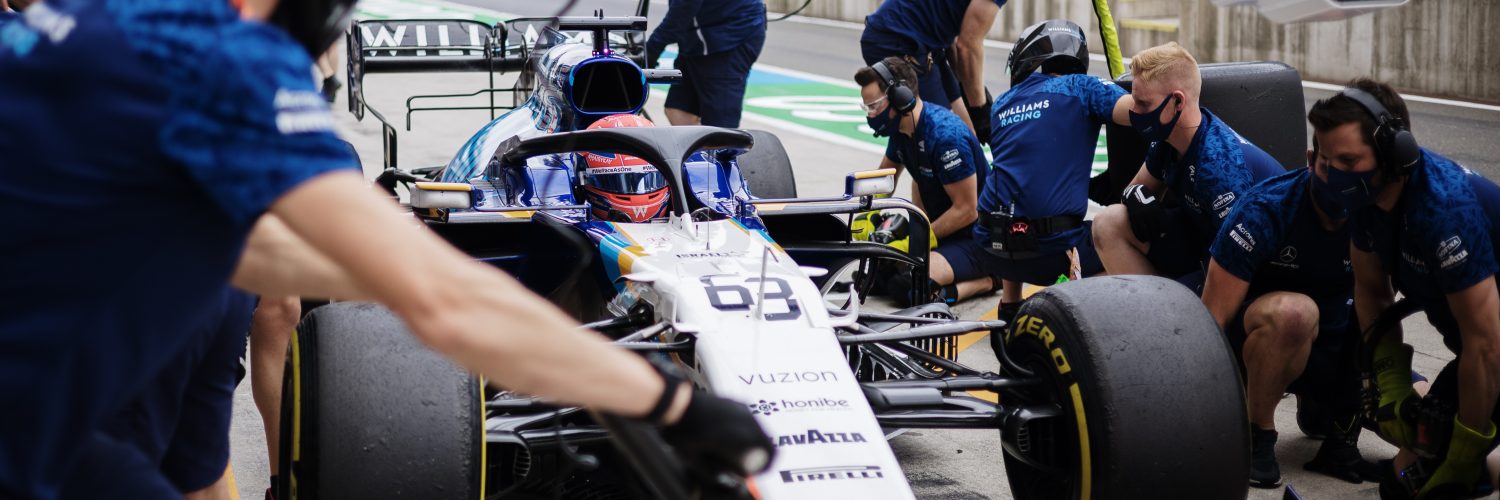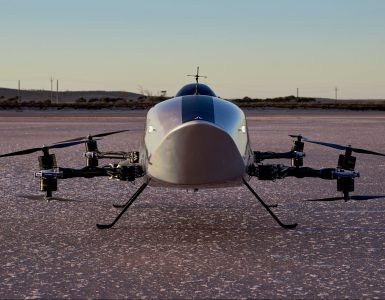It’s an age-old argument in motorsport. What makes the perfect winning team? Is it the machinery, the driver, or a combination of both?
Of course, even the greatest drivers in the history of motorsport would acknowledge that the car beneath their feet has a vitally important role to play. Titles cannot be won otherwise. Yet arguably the most important factor is those vital seconds gained or lost in the pitlane, when fresh tyres are fitted, and intricate car adjustments made.
Herein lies the importance of the race pit stop. The weekend of November 6-7 saw two such instances of excellence in respective race series but in totally contrasting environments and little over 2000km apart. One in Mexico City and the other in Phoenix, Arizona.
Formula One and NASCAR are the two most globally watched series in motorsport. One is a nation-hopping marathon of up to 23 races across many continents that showcases the pinnacle of motorsport technology.
The other is purely US based, hosted at various gladiatorial oval arenas and tracks across the country, the monster 3,200lb V8 saloon cars chancing their skills and fortune for up to 200 laps.
For Hendrick Motorsports driver Kyle Larson, the weekend ended in ultimate glory, the Californian notching an incredible tenth victory of the season – but only after a magnificent effort from his No.5 pit crew saw him overhaul Martin Truex Jr. and Denny Hamlin and take a victory at Phoenix Raceway in a race that was certainly in the balance up to that point.
And for Williams Racing driver George Russell, his team showcased yet again why they are one of the greatest pit crews in the world, a 2.17s stop being the fastest of the weekend and with it a second DHL Fastest Pit Stop award in 2021. Let’s see how the teams got it done and how the respective crews differ in their respective disciplines…
Clocking the fastest pitstop of the #MexicoGP with a 2.17s stop ⚡️
Great work, team 👏 pic.twitter.com/wdQcgF6Fm1
— Williams Racing (@WilliamsRacing) November 8, 2021
HOW HENDRICK GOT THE JOB DONE FOR KYLE LARSON
As opposed to Formula One, a NASCAR pit crew consists of up to eight people and each occupying a differing role. Anyone who has seen the iconic movie ‘Days of Thunder’ will recall mechanics jumping over the wall to jack up the car, make adjustments, change tyres and get that car rolling back out on the circuit as quickly as possible.
The eight pit crew members, consisting of a ‘Jackman’, Tire Changer, Tire Carrier, Crew Chief, Car Chief Gasman and Utility Man cranked out a 11.79-second pit stop – the second-fastest Cup Series stop this season. That allowed Larson to jump the other three title contenders and into first place with only 25 laps of the race remaining.
They were all instrumental in what Tyre carrier R.J. Barnette called a ‘once-in-a-lifetime achievement’ to get their man back out on track.
The title-deciding pit stop.@KyleLarsonRacin's final pit stop was @TeamHendrick's fastest of the season as an organization. #NASCAR pic.twitter.com/soNEwHUcw6
— NASCAR on NBC (@NASCARonNBC) November 8, 2021
“We got the caution – when it came down to it, we were like, ‘Let’s get one (spot), maybe two’ because the Nos. 11 (Denny Hamlin) and 19 (Martin Truex Jr.) and 9 (Chase Elliott) are some of the best cars on pit road,” Barnette is quoted on the official Hendrick Motorsport website. “To pass one is a great accomplishment. To pass them all? You’re not going to do that again. It’s a once-in-a-lifetime thing.
“In the beginning of the race, we did struggle for the first couple of stops,” added jackman Brandon Johnson. “We were hoping and praying for one more stop. I knew if we did get another one, we were going to come through. Everyone on this team is experienced.”
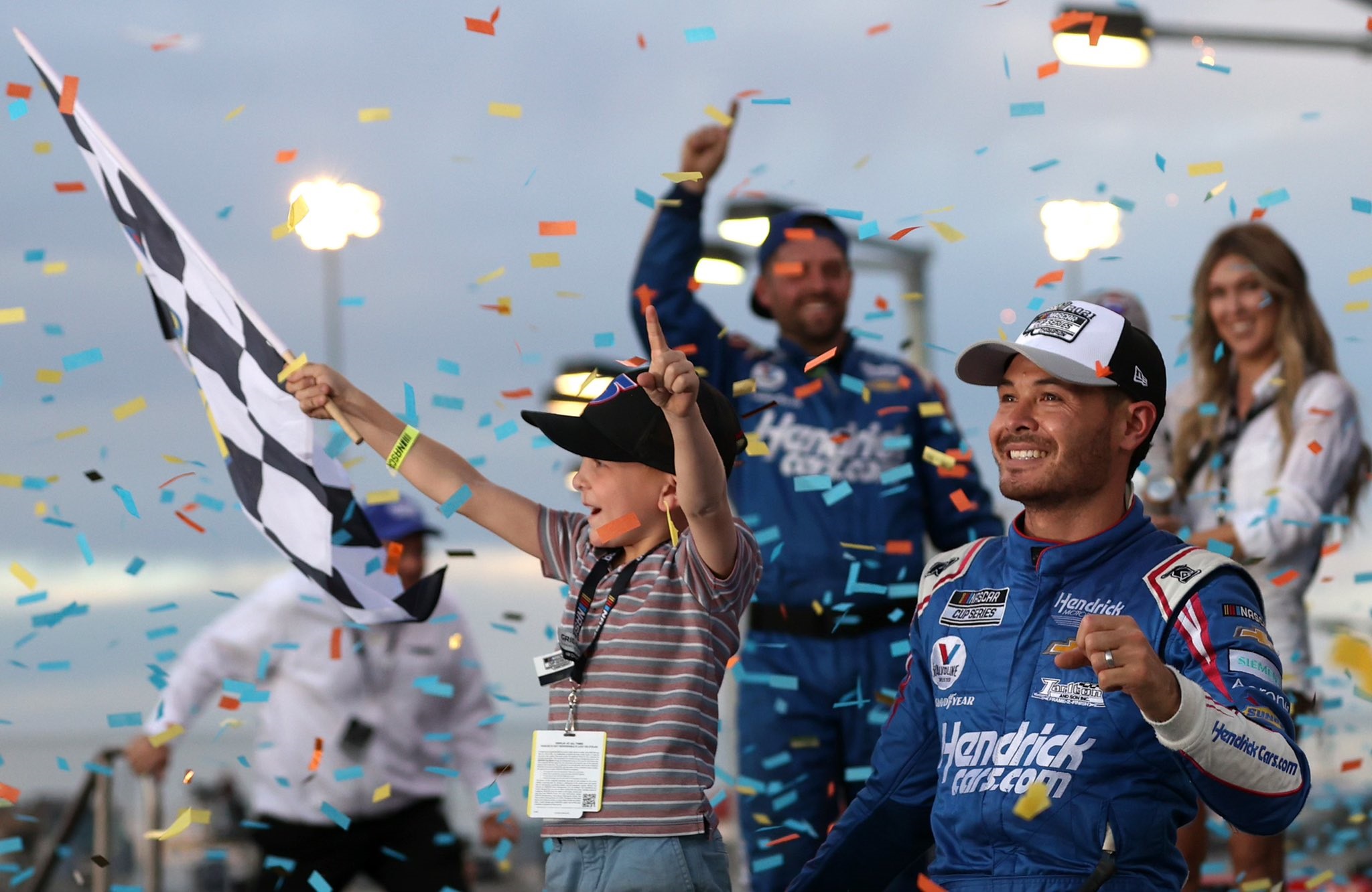
A humble Calvin Teague, the rear tire changer for the winning No. 5 team, added that he felt they had to pull a big game changer out of the bag to get the job done despite Hendrick Motorsports boasting the best average four-tire pit stop time in the playoffs.
“You never want to end the year on a stop that wasn’t as good as it should have been,” explained Teague. “We were just hoping for an opportunity to come down, pick up one spot, maybe two. I never imagined we’d pick up three. We knew we could probably do it, but we knew it had to be a knockout stop.”
HOW WILLIAMS RACING SHOWCASE EXCELLENCE IN TEAMWORK
As opposed to a NASCAR, a Formula One car is a veritable feather of a machine, weighing in at 752kg at the time of writing for the 2021 season. With pit stops achieving close to only two seconds, timing and teamwork is absolutely critical, and this is an almost balletic dance honed from hours and hours of practice not just at the race venues but back at the factory.
Yes, you read that right, teams practice pit stops on the factory floor where markings are painted, and they practice often between races and during the off season.
Much of the important work is done during the race weekend and the foundations are laid as early as free practice where drivers will practice tyre burnouts over the pit box area to lay down rubber on the slippery concrete surface to improve grip and traction for the pit stops proper.
Now it’s time to practice a stop. The driver will follow four yellow marker arrows in his pit box leading up to the lollipop man and line up his front axle to stop in line with markers being held by the two of the front mechanics.
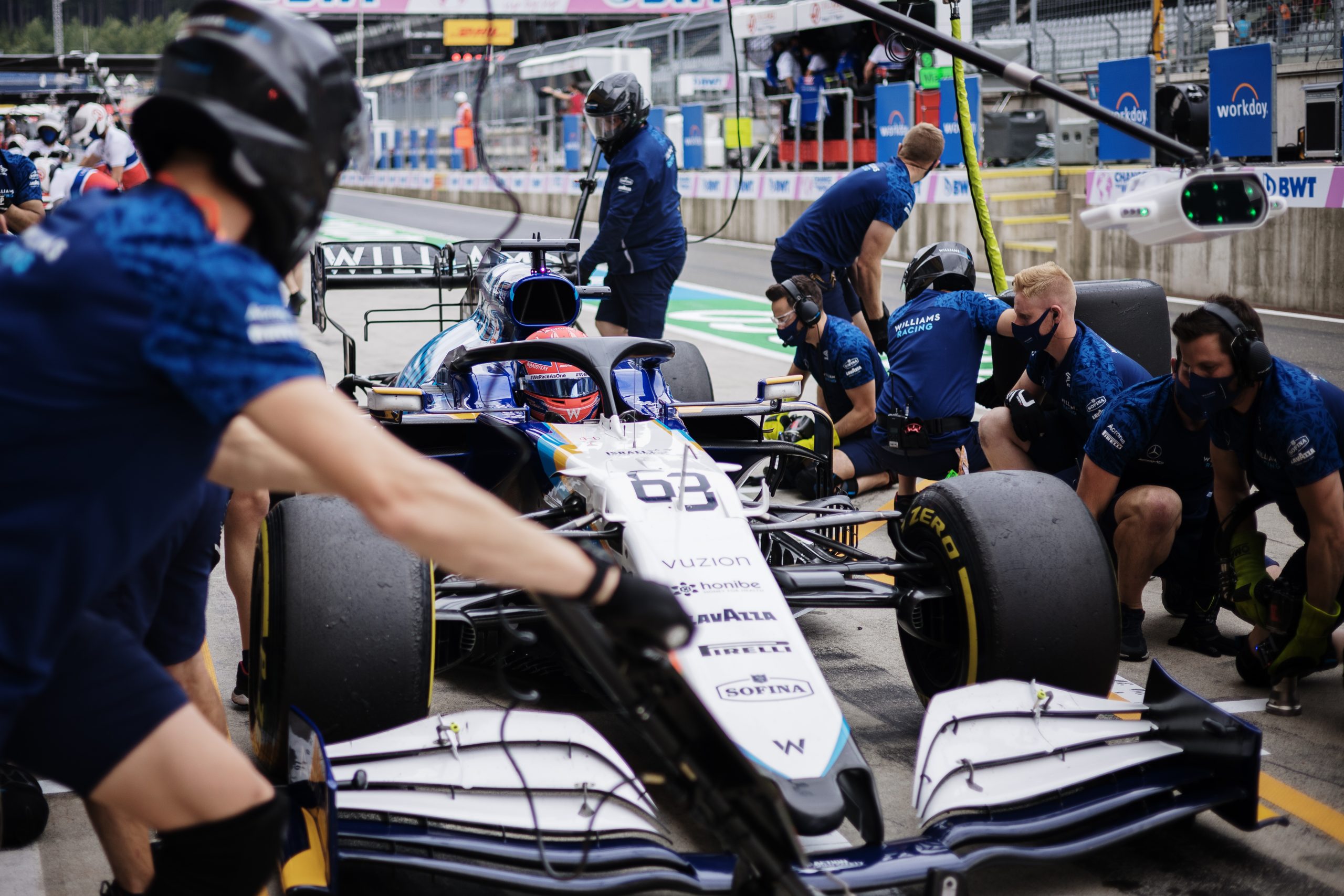
Austrian Grand Prix, Friday 2nd July 2021. Spielberg, Austria.
Once stationary, the car is jacked up and the mechanics can get to work and there are three in place on each corner of the car. One operates the wheel gun; one detaches the old tyre and the other attaches the new one. When the new wheel is in place, each mechanic will raise his arm to signal the job is done and when all four arms are up, the lollipop is lifted and away goes the driver. All in around two seconds.
Of course, not every pitstop always runs like clockwork. Even for a team as polished as Williams Racing, behind each tyre crew is a back-up wheel gun and a spare wheel nut. Although now a rarity, stalling the car is also a possibility and for this reason a further mechanic lies in wait behind the rear jack operator just in case.
It’s such an important part of grand prix racing that pit crews will practice changing a car’s tyres up to 60 times a weekend with each driver having around 20 mechanics designated to him.
Motorsport Technology is an Acronis initiative and Acronis are proud to be the official Cyber Protection Partner of Williams Racing and Hendrick Motorsports. To find out more, please visit https://www.acronis.com/en-us/lp/msp-sports/
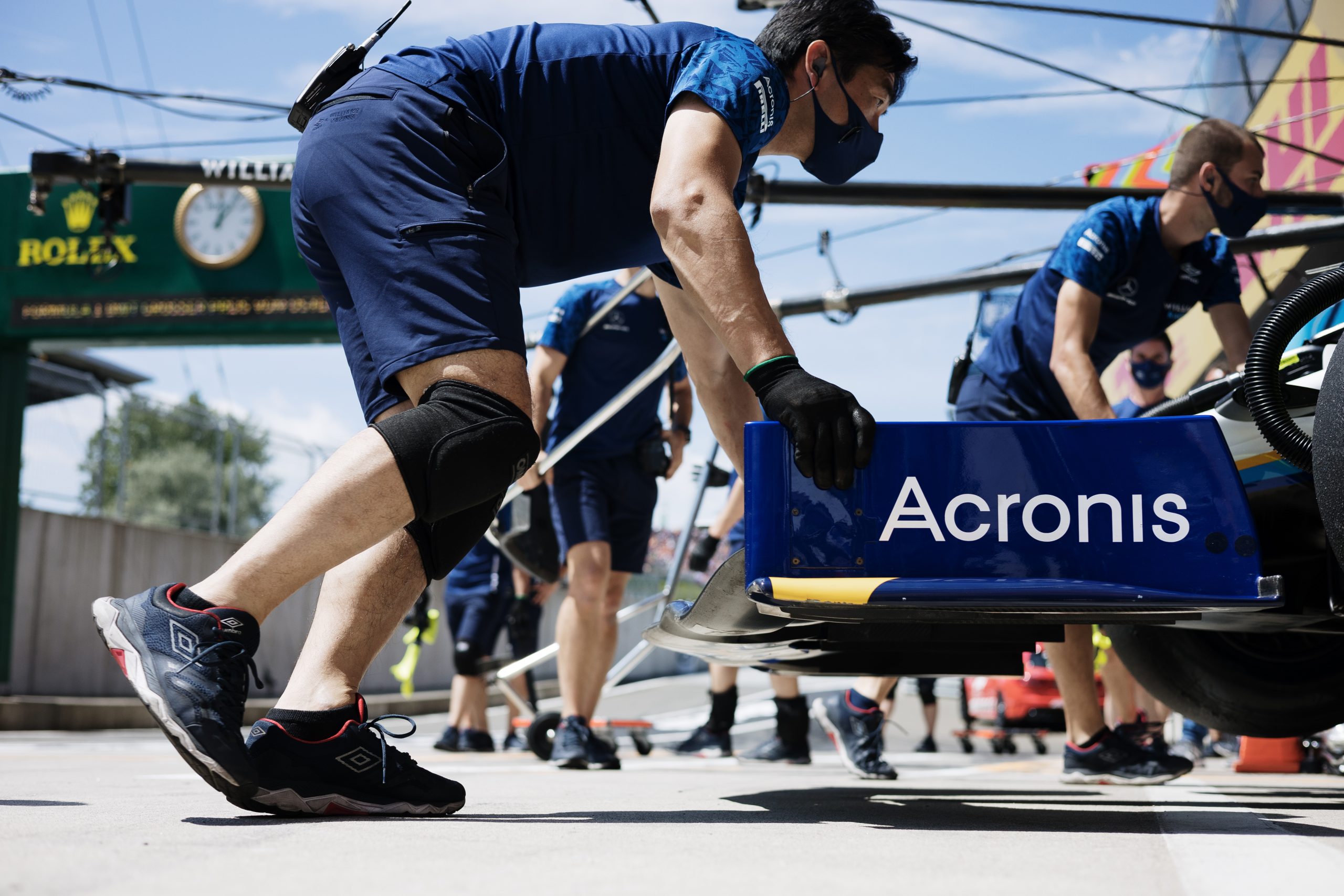
Austrian Grand Prix, Saturday 3rd July 2021. Spielberg, Austria.

